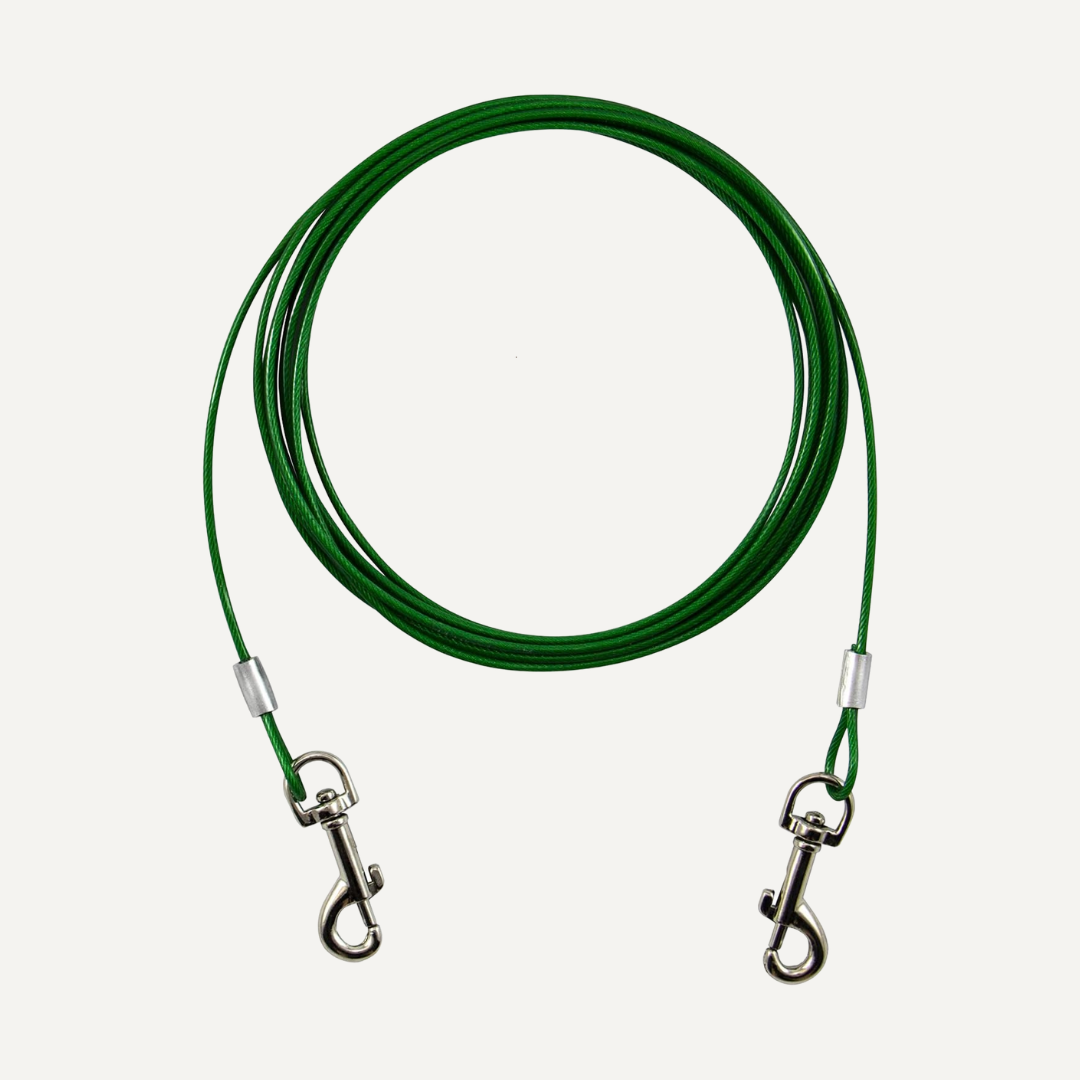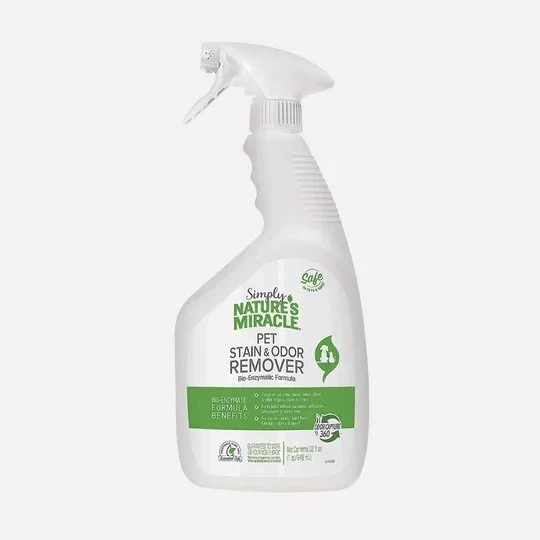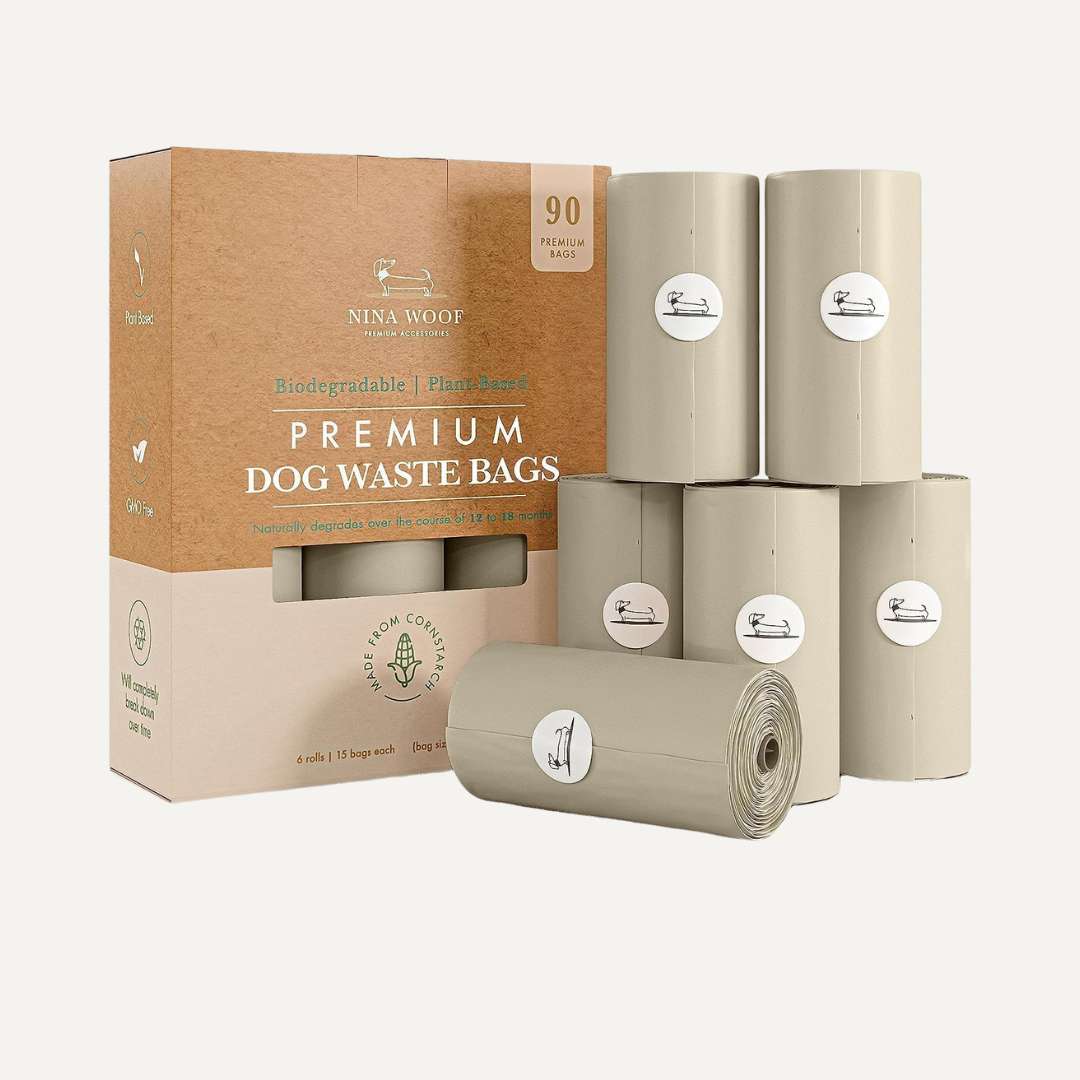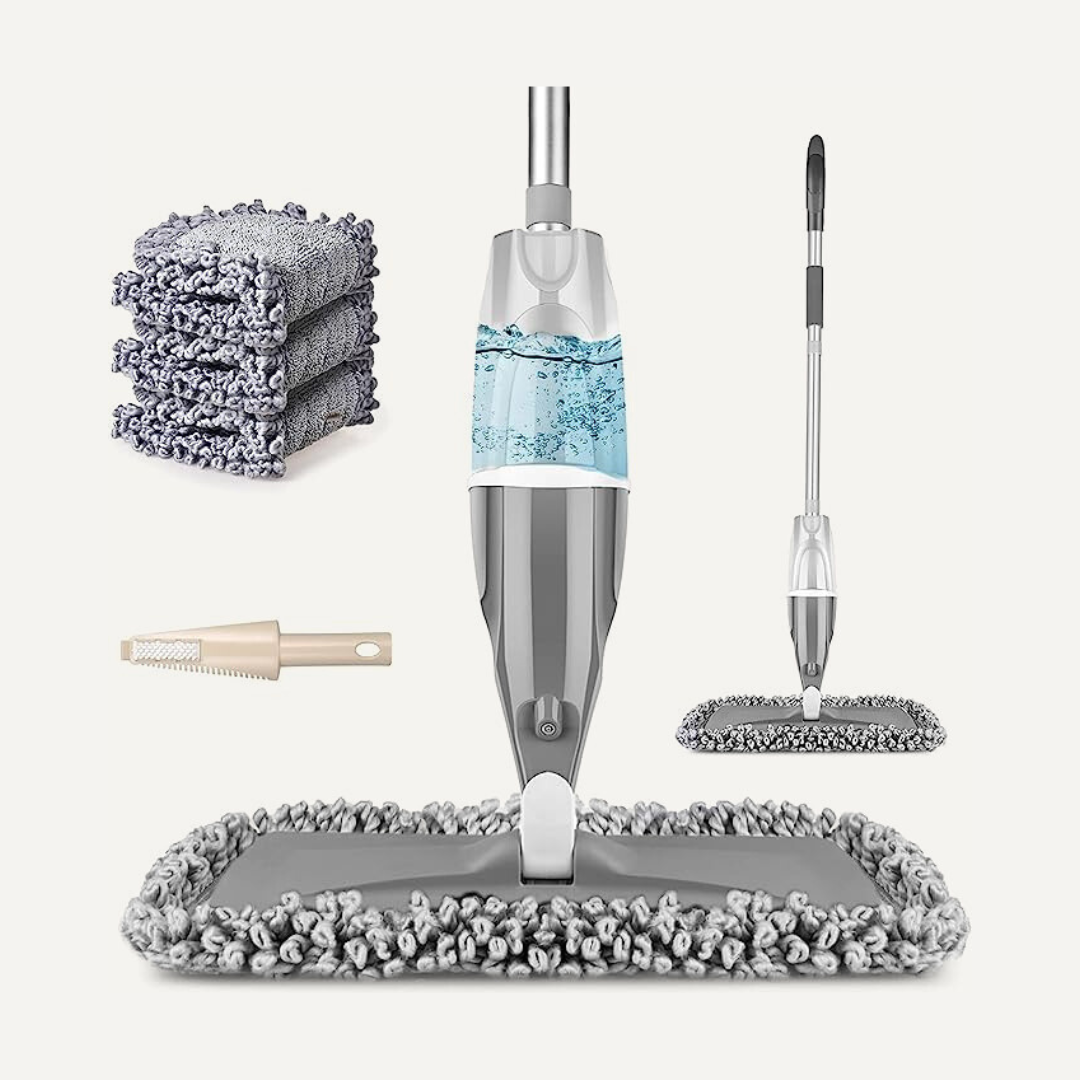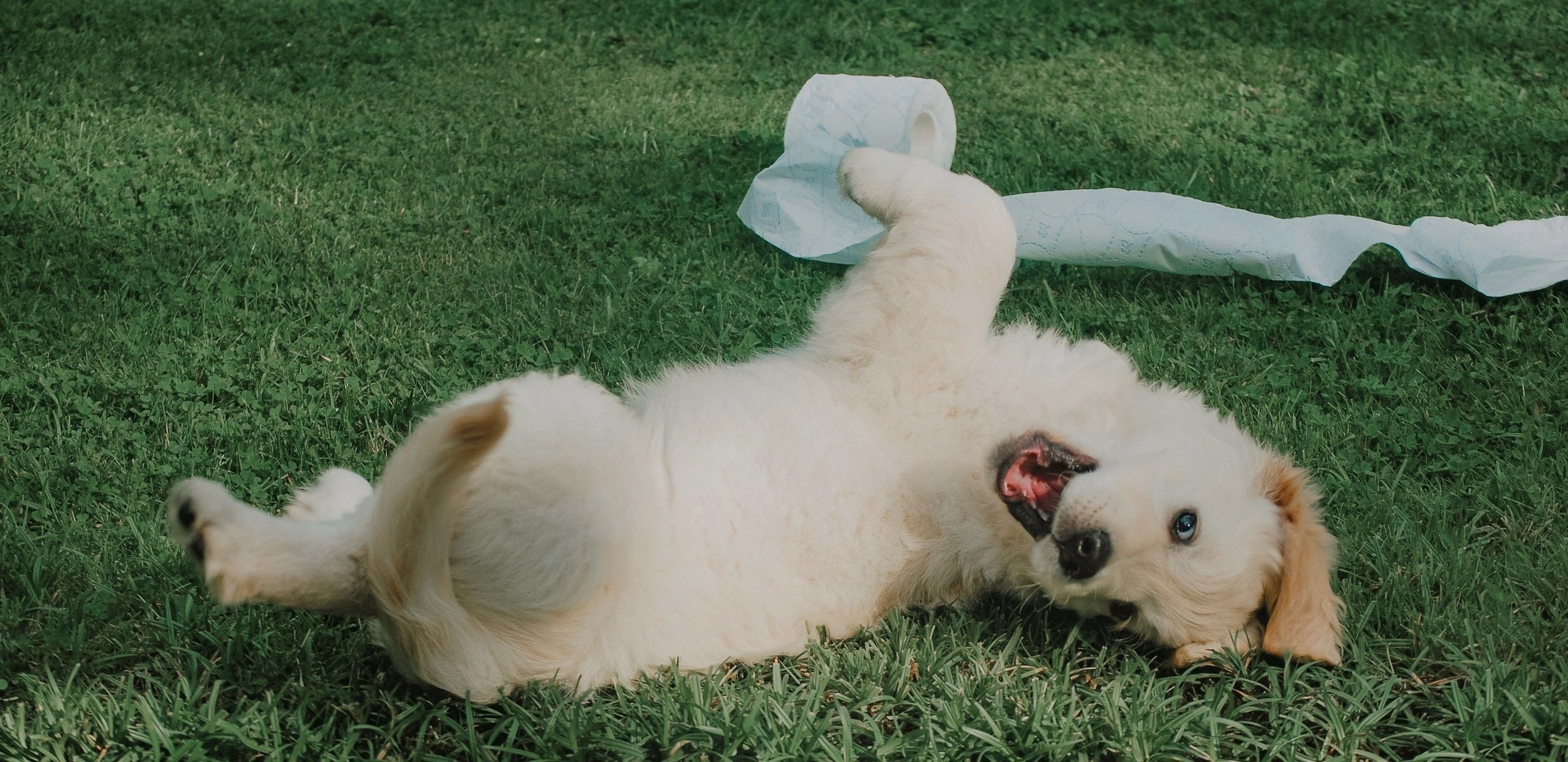
Everyone’s heard “you can’t teach an old dog new tricks,” and while that’s mostly false, there’s one big exception—potty training. This skill is tied to a biological function, and once it’s set, it’s tough to change. Trying to potty train a dog after they’ve reached adulthood can be a real challenge.
WHAT YOU WILL NEED
STAIN & ODOR REMOVER
Simply by Nature's Miracle is my favorite stain and odor remover for potty training any puppy!
BEEF TREATS
Bocce’s Bakery Training Bites are quite small, but suitable for any sized dog. Generally these do not need to be broken into smaller pieces.
INDOOR PUPPY TETHER
Keeping your pup close is the key to success when potty training a new puppy or rescue dog. For supervised use only.
PUPPY CRATE
This wire crate is everything you need. It’s functional & affordable, and comes with a divider panel so it will grow with your puppy.
NOTE: All products have affiliate links, which means I earn a small commission on each item purchased from the links. I appreciate your support and wish you happy training!
KEYS TO SUCCESS
POTTY TRAINING OVERVIEW
When everything goes according to plan, you'll get your puppy outside on a leash before they have a chance to do their business inside. The leash keeps your pup close by so you can jump in with a treat or some praise as soon as they take care of business outdoors. Timing is everything here—dogs are pros at connecting the dots, but only if the reward comes within about 3 seconds of the action.
As your puppy starts to relieve themselves, say "get busy" and then hand over a treat the moment they’re done. Over time, your pup will start linking "get busy" with the act of relieving themselves and the tasty reward that follows. While having this cue can be super helpful, just know that for most dogs, it won’t ever become a full-on command. It's more like a gentle nudge in the right direction, rather than a command like "sit" that gets an immediate response.
NOTE: All products have affiliate links, so I earn a small commission on each purchase. Happy training!
FOOD & WATER SCHEDULE
-
When it comes to potty training your dog, getting them on a food and water schedule is key. Knowing when your pup eats and drinks gives you a much better shot at predicting when they’ll need to go.
Now, the guidelines in this section are just that—guidelines. Use your common sense when it comes to your dog’s food and water intake. If your dog has a medical condition or you’re dealing with a heatwave, you might need to adjust the plan, or maybe the whole food and water schedule idea just won’t fly. If you’re unsure, always consult your vet.
And then there are those dogs who seem to think they’re camels and will guzzle water like it’s their last day in the desert. This "tanking up" behavior can throw a wrench in your potty training efforts. If your dog’s part of this hydration-obsessed crew, you might need to limit their water intake. But don’t go making any drastic changes without checking in with your vet first. They can help figure out just how much water is right for your dog, considering their age, size, and the weather.
-
Puppies under 6 months should ideally eat three times a day—morning, midday, and evening. Exactly what time will depend on the schedule of your household, but an example would be 8am, 12pm, and 4pm. Give your dog about 10 minutes to eat their food. After 10 minutes, if they are not actively eating, you can pick up their bowl and discard the food. At their next meal, there is no need to adjust the amount of food they are given. It is often easier to get on a schedule if they are given their normal measured amount of food at each meal regardless of how much food they ate the meal before.
-
The goal of putting your puppy on a water schedule isn’t about depriving them of water—it’s all about knowing when they’re drinking so you can predict when they’ll need to go potty. Some pups are all about those little sips throughout the day, which can lead to a never-ending cycle of tiny bathroom breaks. I’ve had plenty of clients with puppies who will go outside, pee like a champ, and then come back in only to sprinkle the floor 10 minutes later. This is pretty common for pups who are constantly sipping away. If putting your puppy on a water schedule doesn’t help curb this habit, it might be time to chat with your vet, as it could be a sign of something else going on.
When you’re putting your dog on a water schedule, the idea is to offer them a full bowl at each scheduled time and leave it down for about 10 minutes. After that, pick up the bowl. If your dog decides to pass or just takes a tiny sip, don’t sweat it—they’re probably just not that thirsty. Healthy dogs don’t need to be downing five or six bowls of water a day. As long as they’re getting a reasonable amount of water overall, they don’t need to drink at every scheduled time. Of course, if you ever start to worry about how much water your dog is—or isn’t—drinking, it’s always a good idea to give your vet a shout.
For puppies under 6 months, you’ll want to offer water 5-6 times a day, typically with meals, between meals, and once after dinner. For dogs over 6 months, offering water at least 4 times a day should do the trick. Generally, the last water offering should be about 3-4 hours before bedtime, giving your pup enough time to empty out before they hit the sack for the night.
SUPERVISION
-
The best way to set your puppy up for success is to only give them access to indoor areas that are somewhat confined and to keep them supervised. Supervision is crucial for both potty training and teaching good house manners. If your puppy has an accident or gets into mischief and you aren’t there to correct them, you've missed a key moment for teaching. If you notice your puppy is having accidents or being destructive when left alone, don’t keep leaving them unsupervised—it’ll only slow down potty training and reinforce bad habits.
A common pitfall in potty training is that dogs often learn not to go to the bathroom where you can see them, rather than understanding they shouldn’t go inside at all. By keeping your puppy in sight, you help them grasp that it's never okay to relieve themselves indoors, whether you're watching or not.
-
Creating confined spaces for your puppy is basically the same logic behind crating—if they're in a small area, they’re less likely to turn it into their personal bathroom.
Most folks solve this by gating off a puppy-proofed room, usually the kitchen, since a tile floor can handle any accidents without drama. Another clever trick is to use a short tether, around 5-10 feet, to keep your pup in one spot. Just be sure whatever you tether them to won’t tip over and squash them. If you’re short on sturdy options, grab a screw hook from the hardware store and anchor it into a wall stud. Tethering is especially handy if your home has an open-concept layout—it keeps your puppy close by without giving them the run of the place.
-
When your dog is out of the crate and you can’t give them your full attention, tethering is the way to go. It creates a stronger sense of confinement than just gating off a room. Plus, bringing your puppy along as you move around the house helps them learn good manners in every room. Remember, dogs aren’t great at generalizing—just because your pup is potty trained in the living room doesn’t mean they’re good to go everywhere else. Tethering is a smart way to ensure they’re reliably trained throughout the house.
However, never leave your puppy alone while tethered—they could get tangled up, which can be dangerous. If you can’t keep an eye on them, the safest bet is to pop them back in their crate.
FREQUENT POTTY BREAKS
-
Once your dog is on a consistent food and water schedule, predicting when they’ll need a potty break becomes much easier. You’ll quickly notice that they’re especially likely to need to go out after eating and drinking. Some puppies might need to go immediately, while others might take up to an hour before they’re ready. This timing varies with age and size, but most young puppies will need to go outside 10-30 minutes after eating or drinking.
A common question I get is how to teach a dog to signal when they need to go out. The challenge is that young puppies usually aren’t mature enough to alert you on their own. During this stage, it’s your responsibility to anticipate their needs. As your dog grows, you’ll notice they’ll develop their own unique way of letting you know when it’s time for a bathroom break.
-
The time your puppy can go between potty breaks depends on whether they’re in or out of the crate.
Out of the Crate
When your puppy is out of the crate, their activity level increases, making them more likely to need a bathroom break. For an 8-week-old puppy or a pup new to your home, it's wise to start by taking them outside every 30 minutes. If they’re doing well and not having accidents indoors, you can gradually extend this time as they get older. Generally, active puppies and young dogs should go out to relieve themselves at least every two hours.
To help keep track, set a timer on your phone or smart speaker as a reminder. If your puppy shows signs of needing to go out before the timer goes off, take them out immediately.
In the Crate
During the day, a general rule of thumb for how long your dog can stay in the crate is to take their age in months and add 1. For example, a 2-month-old puppy can typically be crated for about 3 hours at a time. However, this caps at 8 hours, so even older dogs shouldn’t be crated for longer than that. Keep in mind that every puppy is different, so adjust as needed based on your pup’s behavior and needs.
-
How long a puppy sleeps through the night varies by individual. With a proper food and water schedule, most puppies over 8 weeks old can sleep at least 4 hours before needing a potty break, while some might snooze for a full 8 hours. During those early months, you might have to get up once or twice a night, but if you are one of the lucky ones who's puppy sleeps through the night, there’s no need to wake them—let them (and yourself) sleep.
By around 4 months, most puppies are reliably sleeping through the night. If your puppy is still waking you up at this age, it’s a good idea to check with your vet to rule out any medical issues. Similarly, if your potty-trained adult dog suddenly starts having accidents or needs to go out during the night, a vet visit is also recommended.
SHOP RECOMMENDED CLEANING PRODUCTS
PICK UP BAGS
These pickup bags are extra thick and roomy, plus they are compostable. What more could you want from a pick up bag?
STAIN & ODOR REMOVER
Simply by Nature's Miracle is my favorite stain & odor remover for potty training! A must-have for a new puppy.
LAUNDRY BOOST
If you have a puppy or senior dog and are often washing their bedding, this product is great to get the persistent smell out.
STAIN & ODOR REFILL
Fill the spray mop with this refill solution. I love this hack for potty training young pups because it just makes the process easier.
PET ROOMBA
The IRobot Roomba j7+ avoids objects in its way (including pet messes!) and it also empties its bin all by itself so you don’t have to.
BISSELL SPOTCLEAN
Clean pet messes with the push of a button! This machine does all the work and is an absolute must have for puppy owners with carpets.
MOP REFILLS
Potty training can be messy, but clean up just got easier. Be prepared for your pup’s next mess with extra spray mop refills!
SPRAY MOP
Fill this spray mop with Nature's Miracle Stain and Odor Remover. I love this hack for potty training because it just makes the process easier.


